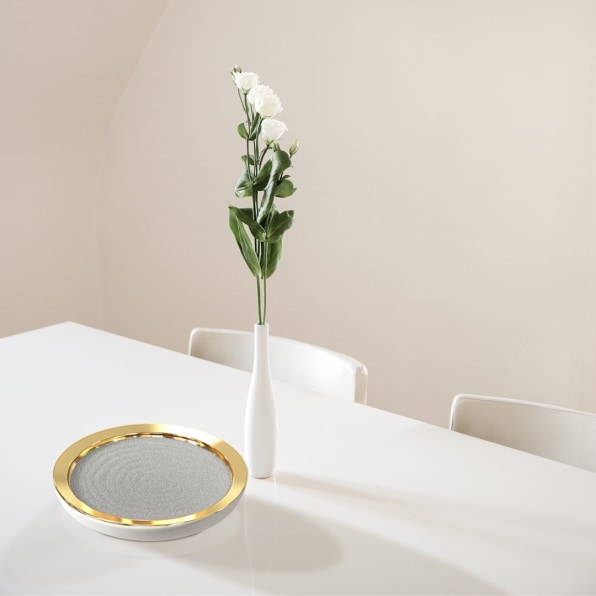This is the most poetic way to block your phone’s distracting notifications
After staring at a screen all day, the last thing I want to do is look at my phone. But inevitably, the texts and notifications roll in, and it’s easy to get sucked into more screen time.
Now, the U.K.-based design studio Cohda has designed a small, bowl-size zen garden for your home—but instead of raking sand to help still your mind, you’re supposed to bury your phone underneath grains of conductive microspheres, which stop all electromagnetic signals from getting out. It’s like putting your phone on airplane mode by covering it up with sand.

[Photo: Cohda]
The bowl, named Komoru (which means “to seclude oneself” in Japanese), uses the properties of the Faraday cage, an enclosure that’s designed to block electromagnetic fields, to render your phone mute. Key to Komoru’s design are the conductive beads themselves. Traditional Faraday cages require that an electronic device be completely surrounded by a solid or mesh surface to work, but the designers at Cohda realized that small beads could do the same job. The challenge was: How should they be designed so they don’t scratch the outside of a phone and won’t get stuck inside a charging port or headphone jack? The designers ended up using a coating of non-magnetic nickel on the beads, which is a softer material than the metals typically used in smartphones. To determine the right size, they tested different radii with a variety of ports from different smartphones to ensure that the final beads won’t find their way inside.

Of course, there are far easier ways to prevent being distracted by a phone. Putting it in airplane mode or do-not-disturb mode are two of the simplest if you have a hard time just leaving your phone in the other room. Still, Komoru’s typology of the zen garden has a certain poetry to it. Plus, it could easily replace that bowl by the front door that you might use to keep your phone and keys.

[Photo: Cohda]
Komoru is part of the digital well-being movement, which provides tools to help people manage the amount of time they spend on their phones. It has come under fire of late for taking aim at the wrong problem: For one, it’s a convenient way for tech companies to put the onus on users to ignore alluring interfaces, rather than those companies just building healthier products. Plus, as University of Pennsylvania postdoctoral researcher Arunas L. Radzvilavicius recently pointed out, using our phones and social media to communicate isn’t an addiction that individuals have to break—it’s a strong social norm that’s incredibly difficult for a single person to reject. Even if you try not to look at Instagram, you can’t stop people from posting pictures you might be interested in or from sending you messages.

But neither companies nor social norms are going to change significantly overnight, so many of us have to find our own workarounds–and surprise, there are plenty of companies that are happy to help. One coffee shop blocks all signals so that people focus on the people around them. Several companies sell “dumbphones,” which strip the phone down to the bare essentials. Then there’s Yondr, a service that is helping to make concerts and schools phone-free by literally locking up users’ devices. Maybe a beautifully designed Faraday cage can provide that extra bit of mindfulness you need to spend less time with your screen.
(35)



